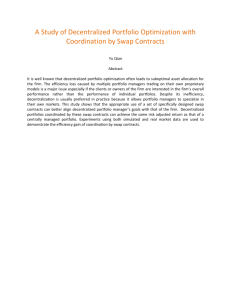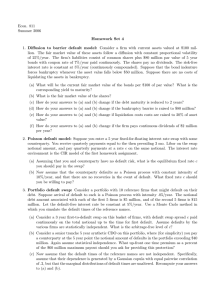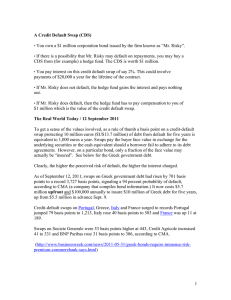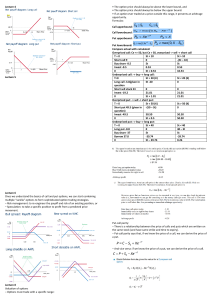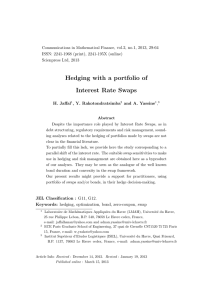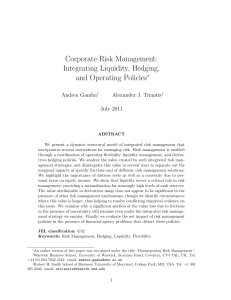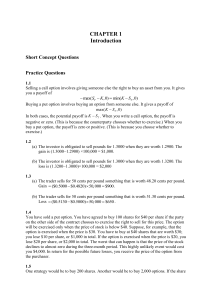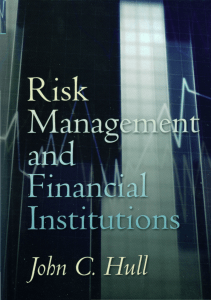More sample questions for Econ 410
advertisement
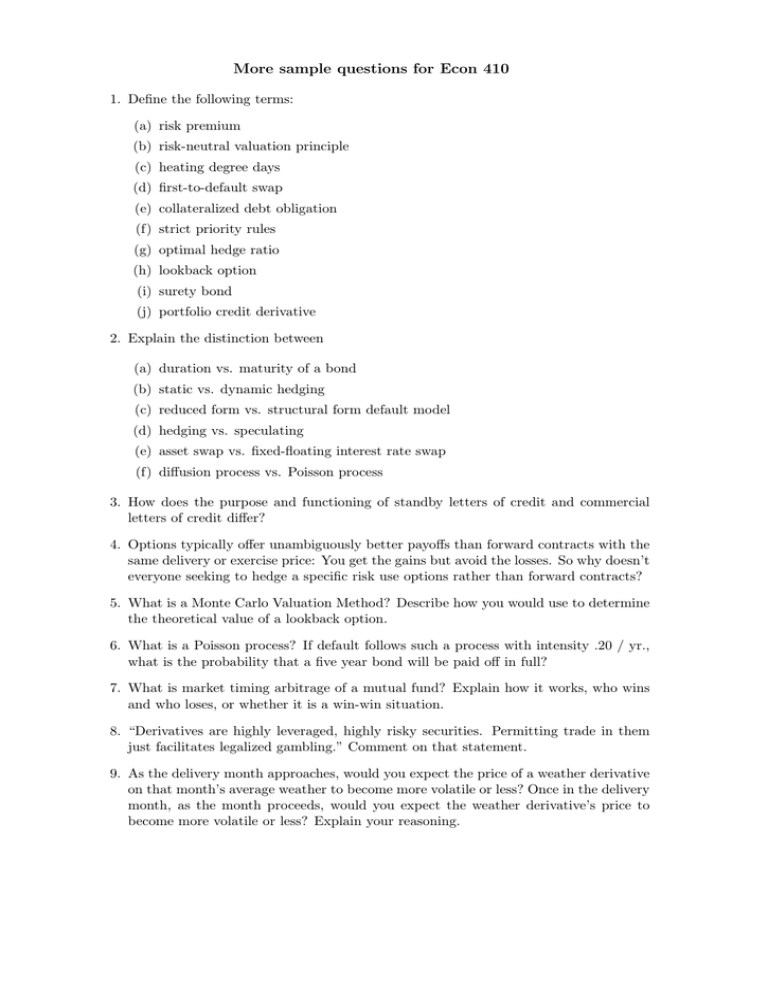
More sample questions for Econ 410 1. Define the following terms: (a) risk premium (b) risk-neutral valuation principle (c) heating degree days (d) first-to-default swap (e) collateralized debt obligation (f) strict priority rules (g) optimal hedge ratio (h) lookback option (i) surety bond (j) portfolio credit derivative 2. Explain the distinction between (a) duration vs. maturity of a bond (b) static vs. dynamic hedging (c) reduced form vs. structural form default model (d) hedging vs. speculating (e) asset swap vs. fixed-floating interest rate swap (f) diffusion process vs. Poisson process 3. How does the purpose and functioning of standby letters of credit and commercial letters of credit differ? 4. Options typically offer unambiguously better payoffs than forward contracts with the same delivery or exercise price: You get the gains but avoid the losses. So why doesn’t everyone seeking to hedge a specific risk use options rather than forward contracts? 5. What is a Monte Carlo Valuation Method? Describe how you would use to determine the theoretical value of a lookback option. 6. What is a Poisson process? If default follows such a process with intensity .20 / yr., what is the probability that a five year bond will be paid off in full? 7. What is market timing arbitrage of a mutual fund? Explain how it works, who wins and who loses, or whether it is a win-win situation. 8. “Derivatives are highly leveraged, highly risky securities. Permitting trade in them just facilitates legalized gambling.” Comment on that statement. 9. As the delivery month approaches, would you expect the price of a weather derivative on that month’s average weather to become more volatile or less? Once in the delivery month, as the month proceeds, would you expect the weather derivative’s price to become more volatile or less? Explain your reasoning. 10. How could the B.C. provincial government use weather derivatives to hedge against unexpected increases in forest fire fighting costs that result from unusually hot, dry weather? Indicate the type of contract you would recommend, the type of position taken (i.e., long or short), and how you might determine the optimal size of position to take (i.e., number of contracts if they are futures). 11. How would you combine a floating rate loan with an interest rate swap to get the economic equivalent of a fixed rate loan? Illustrate with a concrete example (i.e., pick a hypothetical swap spread and show what fixed rate results). 12. Can an asset backed security be structure so that all of its tranches are ‘less risky’ than the underlying portfolio? Can it be structured so that all of its tranches are less risky than any one of the securities in the underlying portfolio? Give your reasoning. 13. Illustrate how diversification works. Does it improve the expected rate of return on a portfolio? 14. “Current futures prices are the best available predictors of future spot prices.” Under what conditions might this be true? 15. Most widely traded (cash settled) derivative contracts have payoffs based on readily observable, highly visible variables such as broad stock market indexes, temperature measures from government weather offices, government bond yields, Libor rates published by the British Banker’s Association, and so on. Why do you think that is so? Could their insurance function be better served by using more private but relevant variables such as a given firm’s excess heating costs, or it’s cost of borrowing from a particular bank?

